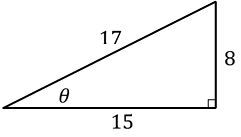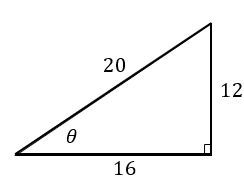Understanding angles is essential in geometry, and two common units for measuring angles are degrees and radians. A full circle measures 360 degrees, while in radians, a full circle is represented as \(2\pi\) radians. The concept of radians is based on the relationship between the radius of a circle and its circumference. Specifically, one radian is defined as the angle created when the length of the arc is equal to the radius of the circle, which is approximately 57 degrees.
To visualize this, if you take a circle with radius \(r\), the circumference can be calculated using the formula \(C = 2\pi r\). Thus, if you travel around the entire circumference, you complete \(2\pi\) radians. For practical purposes, angles in radians are often expressed in terms of fractions or multiples of \(\pi\). For instance, half a circle is \(\pi\) radians, a quarter circle is \(\frac{\pi}{2}\) radians, and three-quarters of a circle is \(\frac{3\pi}{2}\) radians.
To convert between degrees and radians, two key formulas are used. To convert degrees to radians, multiply the degree measure by \(\frac{\pi}{180}\). Conversely, to convert radians to degrees, multiply by \(\frac{180}{\pi}\). For example, to convert 120 degrees to radians, you would calculate:
\[120 \times \frac{\pi}{180} = \frac{120\pi}{180} = \frac{2\pi}{3} \text{ radians}\]
This shows that 120 degrees is equivalent to \(\frac{2\pi}{3}\) radians. Similarly, to convert an angle given in radians, such as \(\frac{6\pi}{5}\), to degrees, you would use the conversion factor \(\frac{180}{\pi}\):
\[\frac{6\pi}{5} \times \frac{180}{\pi} = \frac{6 \times 180}{5} = 216 \text{ degrees}\]
Thus, \(\frac{6\pi}{5}\) radians is equal to 216 degrees. Mastering these conversions is crucial for working with trigonometric functions and graphing in mathematics.





